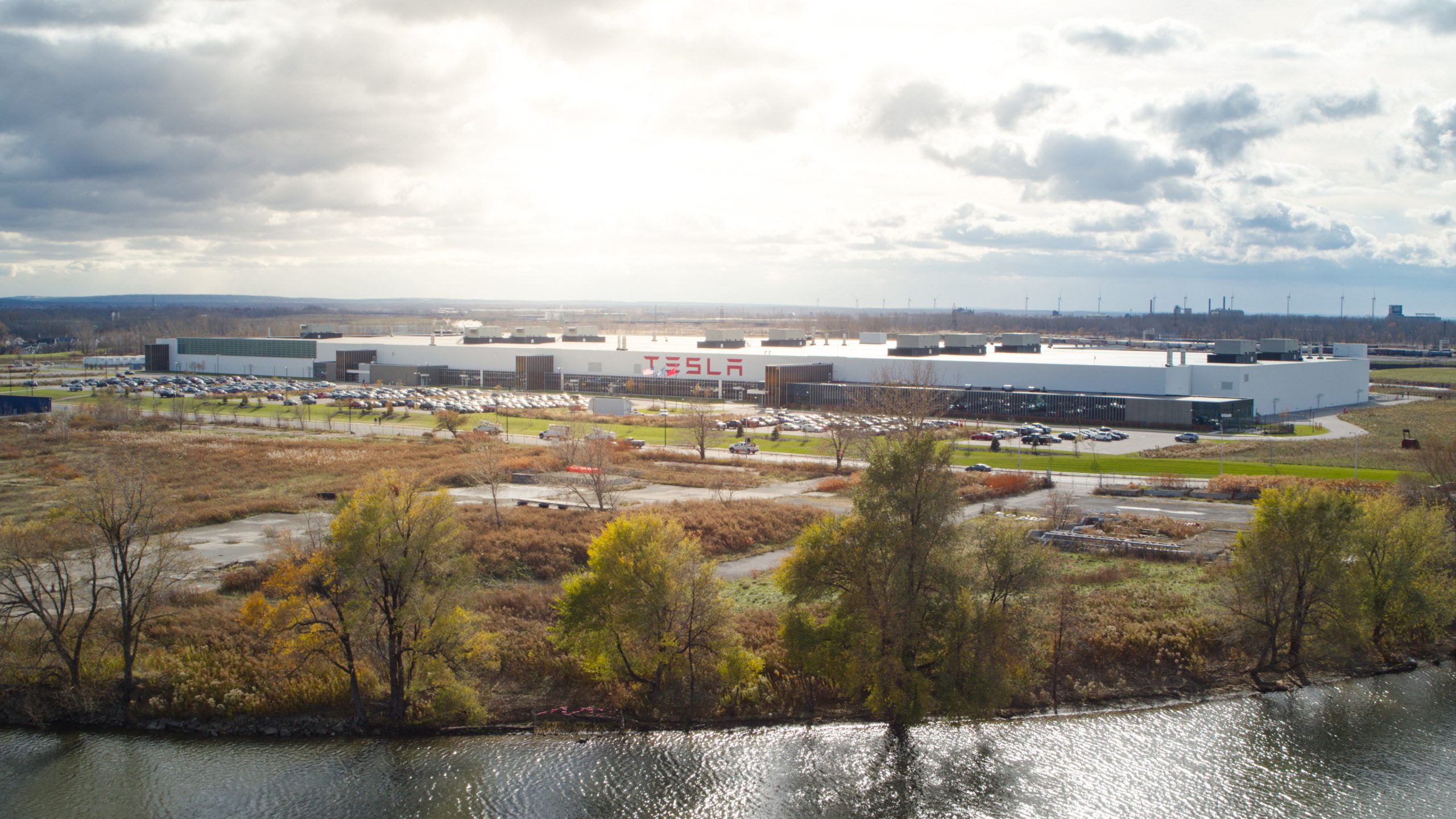
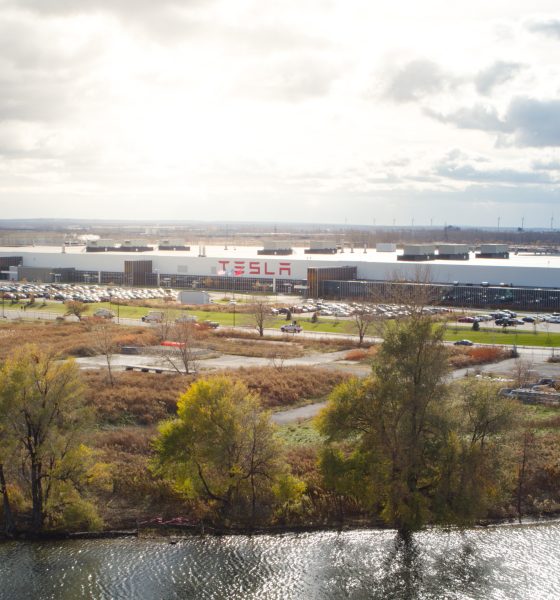
News
Tesla Giga New York faces racism allegations: report
Tesla Giga New York employees have alleged that they routinely faced racism while working at the plant. The problems have reportedly persisted since the facility opened years ago.
Gigafactory New York has been the site of controversy recently after the company terminated a number of employees as part of its regular performance review cycle. Among those who were terminated was an employee who identified as part of an active unionization campaign. A complaint with the US National Labor Relations Board has been filed against the EV maker for allegedly striking back at unionization efforts.
As per a recent report from the Investigative Post, a number of Black employees at Giga New York have also come forward about their alleged experiences on the plant. Seven current and former Tesla employees noted that the racist treatment they received ranged from offensive remarks to them being passed over for promotions regularly.
Promotions
Among those who were interviewed by the publication, four claimed that they were passed over for promotions at least 20 times when they tried to get a better post at the plant. The employees noted that as production associates, they worked on numerous manufacturing lines, and at times, they ended up supervising the work of other employees. The employees noted that when they attempted to get a promotion, they were generally unsuccessful.
As an example, two Black employees who were assigned to work on a new battery line reportedly performed very well, to the point where they ended up writing an instruction manual on how the line should work. When they approached Human Resources for a potential reward for their work, the men were reportedly denied. After this, one of the men claimed that he was sent to another area of Giga New York to pack boxes.
Eventually, a job was opened for the line that the men knew how to run, so both applied. One was asked to pass an engineering test and sit through an unusually extended interview before getting denied. The other did not even reach the interview stage. It was only after the line was shut down and restarted that one of the men was given a chance to have a more senior position.
“I don’t think there’s a clear structure. Did they even get my application? Did they look at it? Are they not hiring anymore? They don’t tell you anything,” one of the men said.
Optics
Five employees also alleged that Giga New York managers had asked groups of Black workers not to speak in groups due to optics. “People will, two or three people, gather and have a conversation. The minute the Black men gather, (management says) ‘Oh, you guys can’t group up like that. You know, it looks like a gang,’” an employee claimed.
The employees alleged that this type of treatment seemed specific to Black workers. This was because other workers of color do not experience the same treatment. This reportedly became particularly uncomfortable following the Tops shooting last May. After the tragedy, some Giga New York workers wanted to attend a vigil during work hours. Management allowed the workers to attend the vigil without pay, but when the workers returned, Giga New York management reportedly assumed that the Black workers were talking about forming a union. Tesla reportedly brought in an official to talk to the plant’s leadership about avoiding a union.
Amidst the allegations, the Giga New York employees did highlight that there are some positive changes in the facility. This included the arrival of a new production manager, Adetope Ogunniyi, who used to work at the company’s Nevada facility. The production manager has reportedly made positive changes, and she has done what she can to ensure that qualified Black employees are granted interviews and promotions. Despite her efforts, however, issues are reportedly still present.
“She’s trying to make changes. But, you know, they’re slow in coming,” one of the workers noted.
The full report on the employees’ allegations against Giga New York can be accessed here.
Don’t hesitate to contact us with news tips. Just send a message to simon@teslarati.com to give us a heads up.

News
Tesla Model X lost 400 pounds thanks to these changes
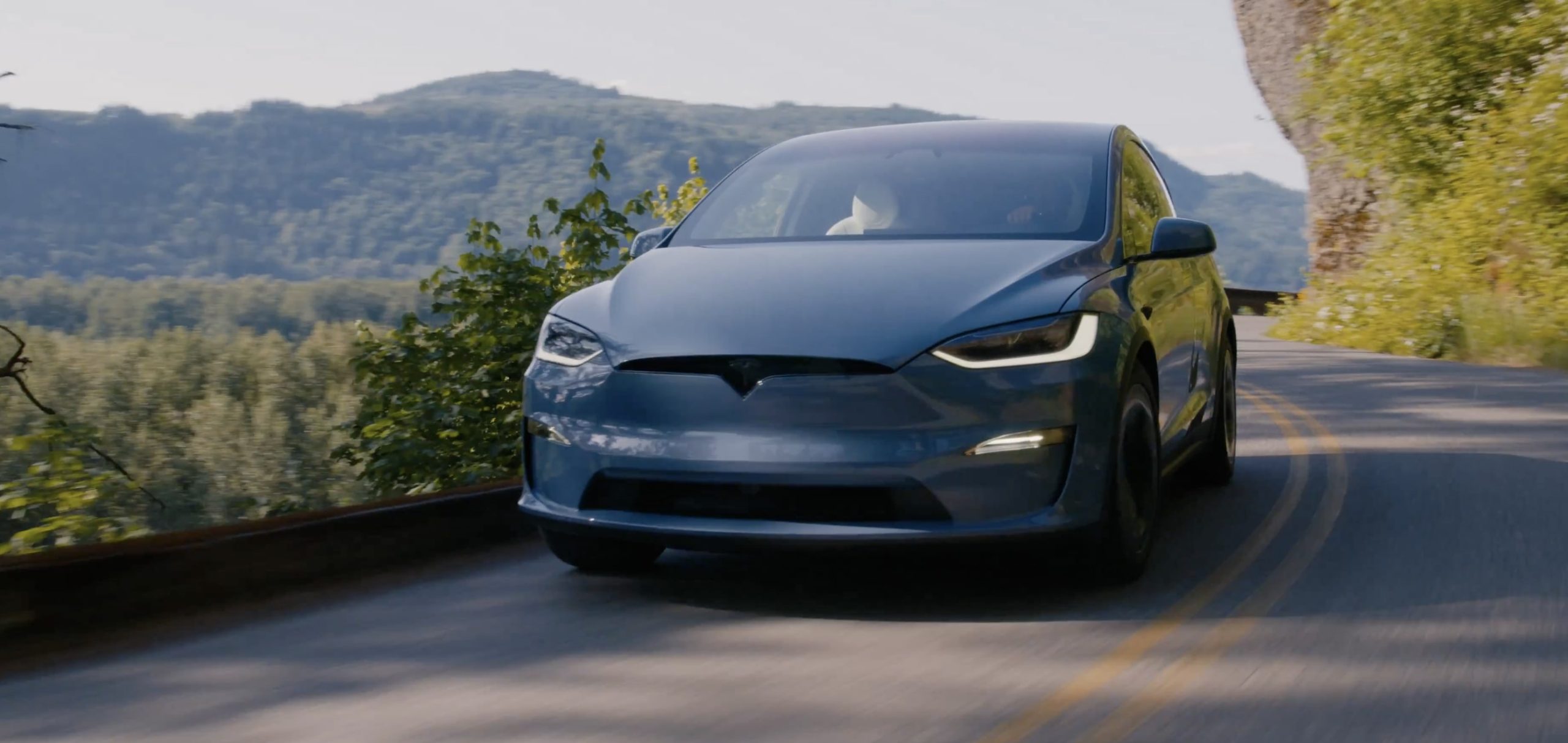
The Tesla Model X has always been one of the company’s most loved vehicles, despite its low sales figures, which can be attributed to its high price tag.
However, the Model X has been a signature item on Tesla’s menu of cars, most notably recognized by its Falcon Wing Doors, which are aware of its surroundings and open according to what’s around it.
But recent improvements to the Model X were looking slim to none, but it appears most of the fixes actually happened under the body, at least according to Tesla’s Vice President of Powertrain, Lars Moravy.
In a recent interview with Car and Driver, Moravy detailed all of the changes to the 2026 iteration of the vehicle, which was about 400 pounds lighter than it was originally. The biggest change is a modification with the rear motor, switching from an induction-type motor to a permanent-magnet design and optimizing the half-shafts, which shed about 100 pounds.
Tesla also got “almost 80 pounds out of the interior bits and pieces,” which “included making parts thinner, different manufacturing process choices, and incorporating airbag-deployment requirements into the headliner fabric,” the report said.
Additionally, the standard five-passenger, bench seat configuration saved 50 pounds by ditching pedestal mounting. This also helped with practicality, as it helped the seat fold flat. Engineers at Tesla also saved 44 pounds from the high-voltage wiring through optimizing the wiring from the charge-port DC/DC converter and switching from copper to aluminum wiring.
Tesla makes a decision on the future of its flagship Model S and Model X
Tesla also simplified the cooling system by reducing the number of radiators. It also incorporated Nürburgring cooling requirements for the Plaid variant, which saved nearly 30 pounds.
Many Tesla fans will be familiar with the megacastings, manufactured in-house by presses from IDRA, which also saves more than 20 pounds and boosts torsional stiffness by around 10 percent. Tweaks to the suspension also saved 10 pounds.
People were truly disappointed with what Tesla did with the Model S and Model X, arguing that the cars needed a more severe exterior overhaul, which might be true. However, Tesla really did a lot to reduce the weight of the vehicle, which helps increase range and efficiency. According to Grok, every 200 pounds removed adds between 7 and 15 percent to range estimations.
This makes sense considering the range estimations both increased by 7 percent from the Model X’s 2025 configuration to the 2026 builds. Range increased on the All-Wheel-Drive trim from 329 miles to 352 miles, while the Plaid went from 314 miles to 335 miles.
News
Tesla launches its new branded Supercharger for Business with first active station
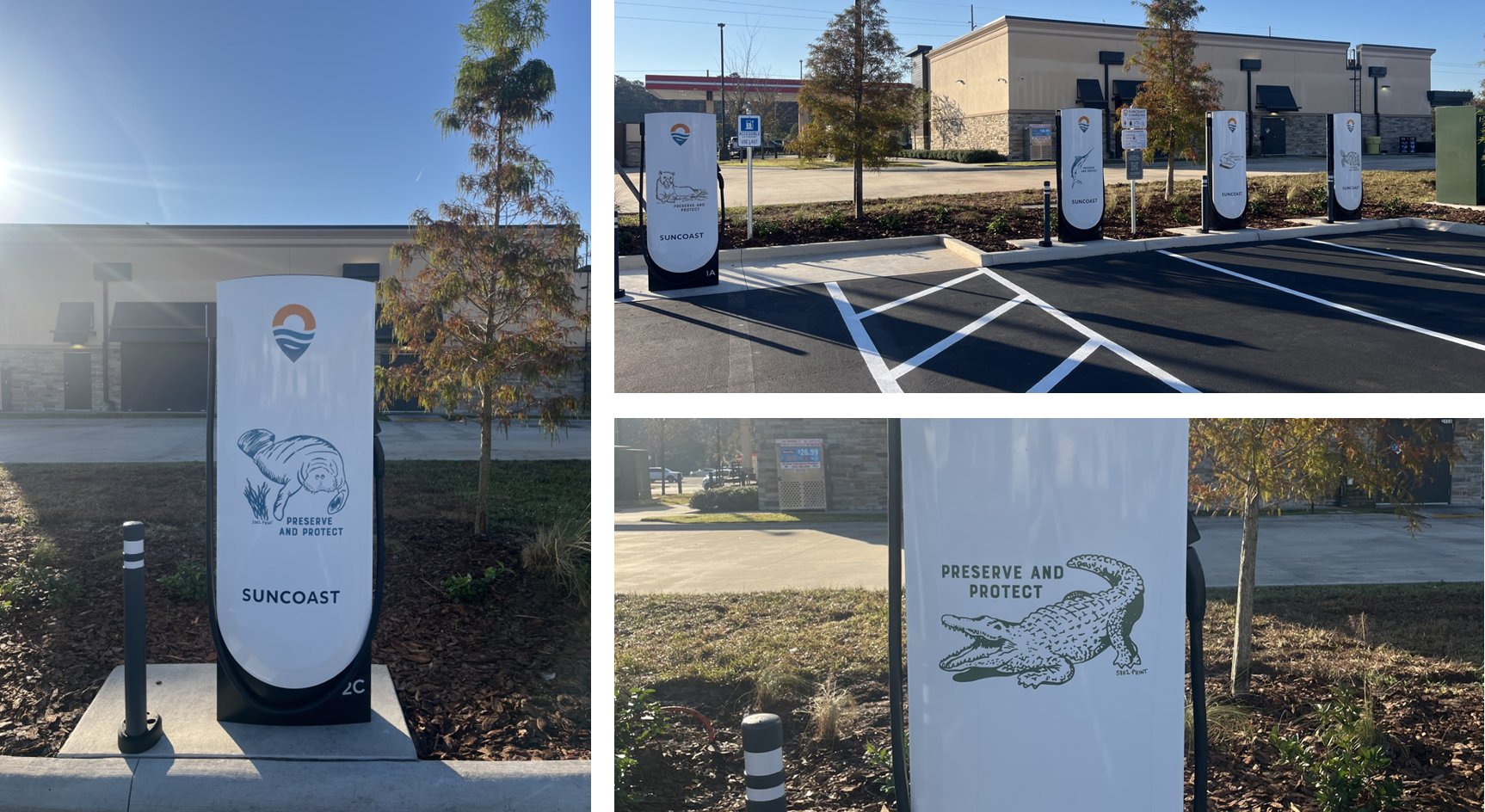
Tesla has officially launched its first branded Supercharger just months after initiating a new program that allows third-party companies to brand their own charging piles.
The site opened in Land O’ Lakes, Florida, and features eight V4 Supercharging stalls offering up to 325 kW of charging speed. It appears it was purchased by a company called Suncoast Credit Union. This particular branch is located Northeast of Tampa, which is on the Gulf of Mexico.
It features graphics of Florida animals, like alligators:
Here’s a video of the graphics being installed on the Tesla Superchargers at this site: https://t.co/oIfEPNZjAH pic.twitter.com/ENWakZ2qT9
— TESLARATI (@Teslarati) November 20, 2025
Tesla launched this program back in September, and it basically was a way to expand its Supercharger presence and also allow companies to pay for the infrastructure. Tesla maintains it. When it announced the “Supercharger for Business,” it said:
“Purchase and install Superchargers at your business. Superchargers are compatible with all electric vehicles, bringing EV drivers to your business by offering convenient, reliable charging.”
The program does a few things. Initially, it expands EV charging infrastructure and makes charging solutions more readily available for drivers. It can also attract people to those businesses specifically.
Tesla launches new Supercharger program that business owners will love
The chargers can also be branded with any logo that the business chooses, which makes them more personalized and also acts as an advertisement.
The best part is that the customers do not have to maintain anything about the Supercharger. Tesla still takes care of it and resolves any issues:
“We treat your site like we treat our sites. By providing you with a full-service package that includes network operations, preventative maintenance, and driver support, we’re able to guarantee 97% uptime–the highest in the industry.”
It appears the Superchargers will also appear within the in-car nav during routing, so they’ll be publicly available to anyone who needs to use them. They are still available to all EVs that have worked with Tesla to utilize its infrastructure, and they are not restricted to people who are only visiting the business.
Cybertruck
Tesla reveals its Cybertruck light bar installation fix
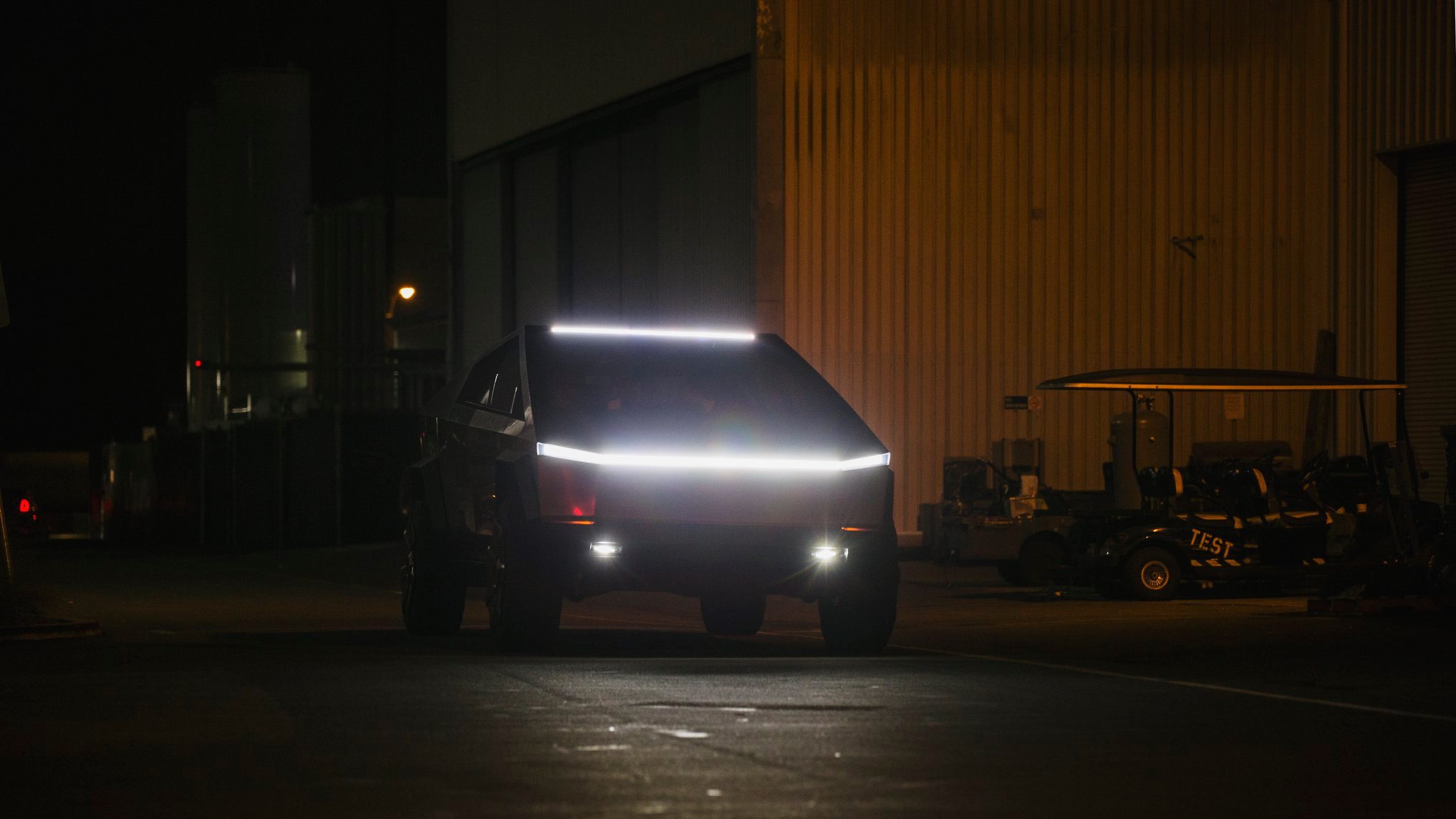
Tesla has revealed its Cybertruck light bar installation fix after a recall exposed a serious issue with the accessory.
Tesla and the National Highway Traffic Safety Administration (NHTSA) initiated a recall of 6,197 Cybertrucks back in October to resolve an issue with the Cybertruck light bar accessory. It was an issue with the adhesive that was provided by a Romanian company called Hella Romania S.R.L.
Tesla recalls 6,197 Cybertrucks for light bar adhesive issue
The issue was with the primer quality, as the recall report from the NHTSA had stated the light bar had “inadvertently attached to the windshield using the incorrect surface primer.”
Instead of trying to adhere the light bar to the Cybertruck with an adhesive, Tesla is now going to attach it with a bracketing system, which will physically mount it to the vehicle instead of relying on adhesive strips or glue.
Tesla outlines this in its new Service Bulletin, labeled SB-25-90-001, (spotted by Not a Tesla App) where it shows the light bar will be remounted more securely:
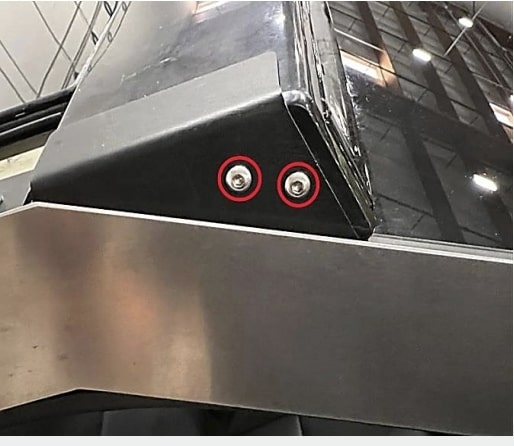
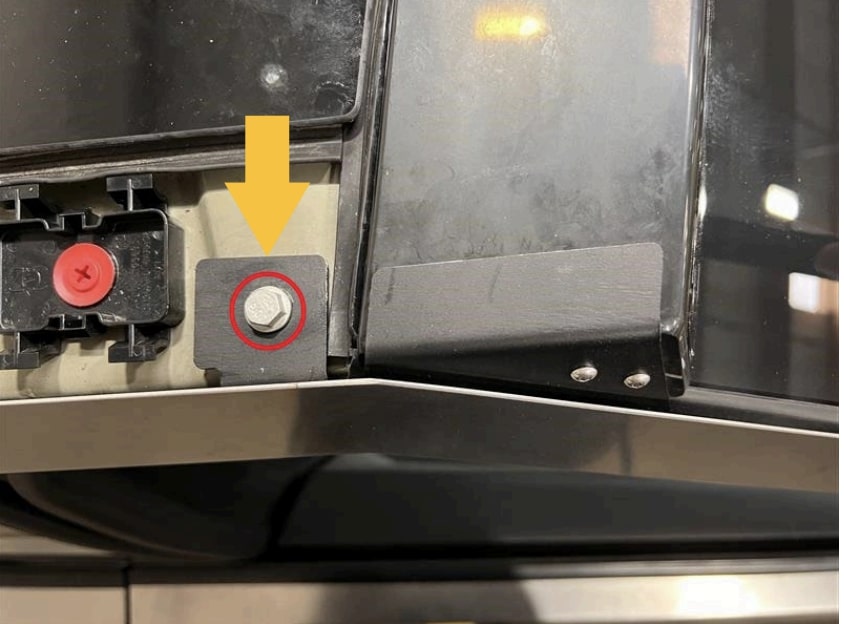
The entire process will take a few hours, but it can be completed by the Mobile Service techs, so if you have a Cybertruck that needs a light bar adjustment, it can be done without taking the vehicle to the Service Center for repair.
However, the repair will only happen if there is no delamination or damage present; then Tesla could “retrofit the service-installed optional off-road light bar accessory with a positive mechanical attachment.”
The company said it would repair the light bar at no charge to customers. The light bar issue was one that did not result in any accidents or injuries, according to the NHTSA’s report.
This was the third recall on Cybertruck this year, as one was highlighted in March for exterior trim panels detaching during operation. Another had to do with front parking lights being too bright, which was fixed with an Over-the-Air update last month.








